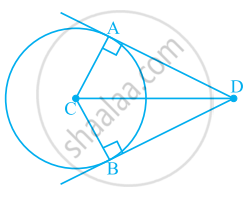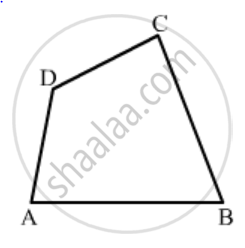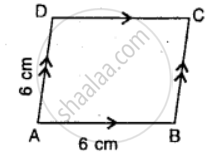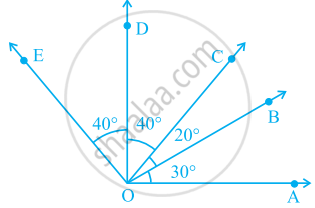Advertisements
Advertisements
Question
What conclusion can be drawn from part of given figure, if DC is the bisector of ∠ADB, CA ⊥ DA and CB ⊥ DB?
Solution
If DC is the bisector of ∠ADB, then ∠ADC = ∠BDC.
Also, CA ⊥ DA and CB ⊥ DB, then ∠CAD = 90° and ∠CBD = 90°
APPEARS IN
RELATED QUESTIONS
In Fig. 16.19, ABCD is a quadrilateral.
How many pairs of adjacent angles are there?

The four angles of a quadrilateral are as 3 : 5 : 7 : 9. Find the angles.
Complete the following statement by means of one of those given in brackets against each:
If opposite angles of a quadrilateral are equal, then it is necessarily a ....................
The angles A, B, C and D of a quadrilateral are in the ratio 2 : 3 : 2 : 3. Show this quadrilateral is a parallelogram.
Write, giving reason, the name of the figure drawn alongside. Under what condition will this figure be a square.

Calculate the measure of each angle of a nonagon.
If angles A, B, C and D of the quadrilateral ABCD, taken in order, are in the ratio 3 : 7 : 6 : 4, then ABCD is a ______.
A quadrilateral can have all four angles as obtuse.
Construct a quadrilateral NEWS in which NE = 7 cm, EW = 6 cm, ∠N = 60°, ∠E = 110° and ∠S = 85°.
In the given figure.
∠COA is a/an ______ angle
